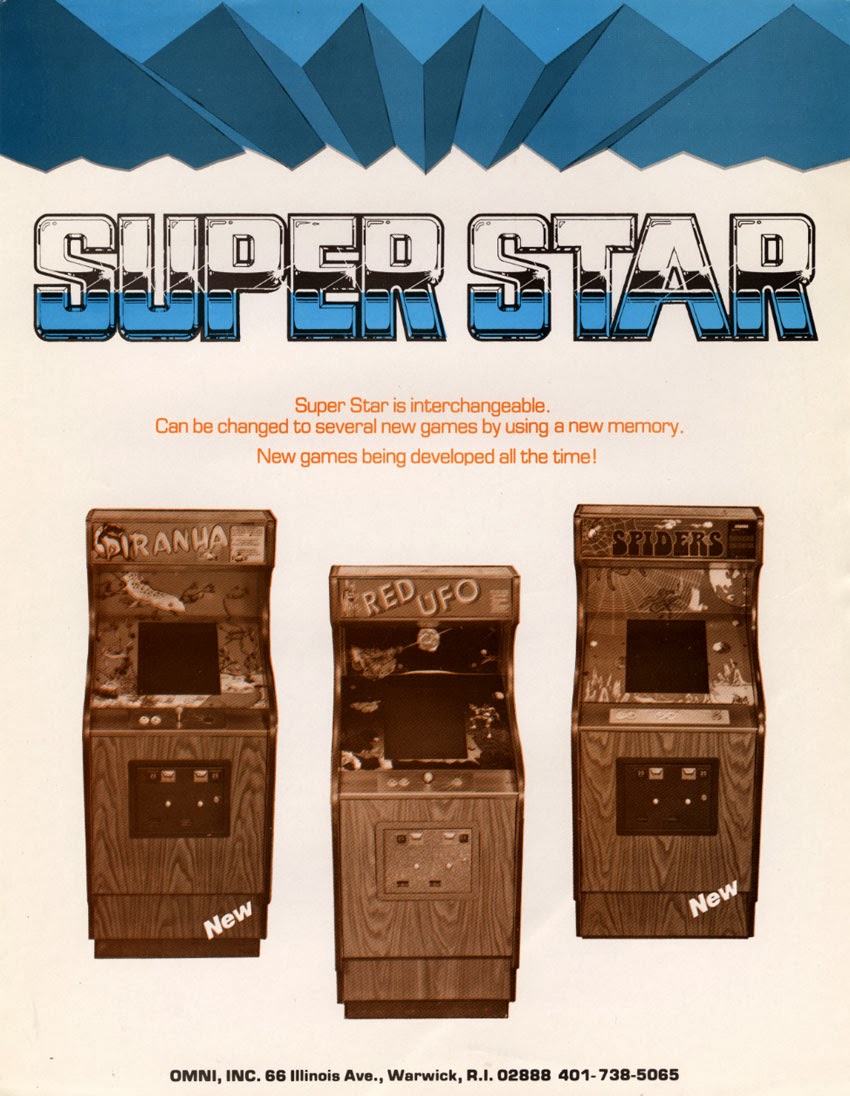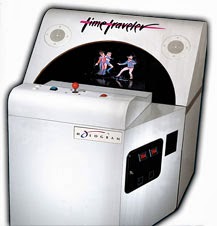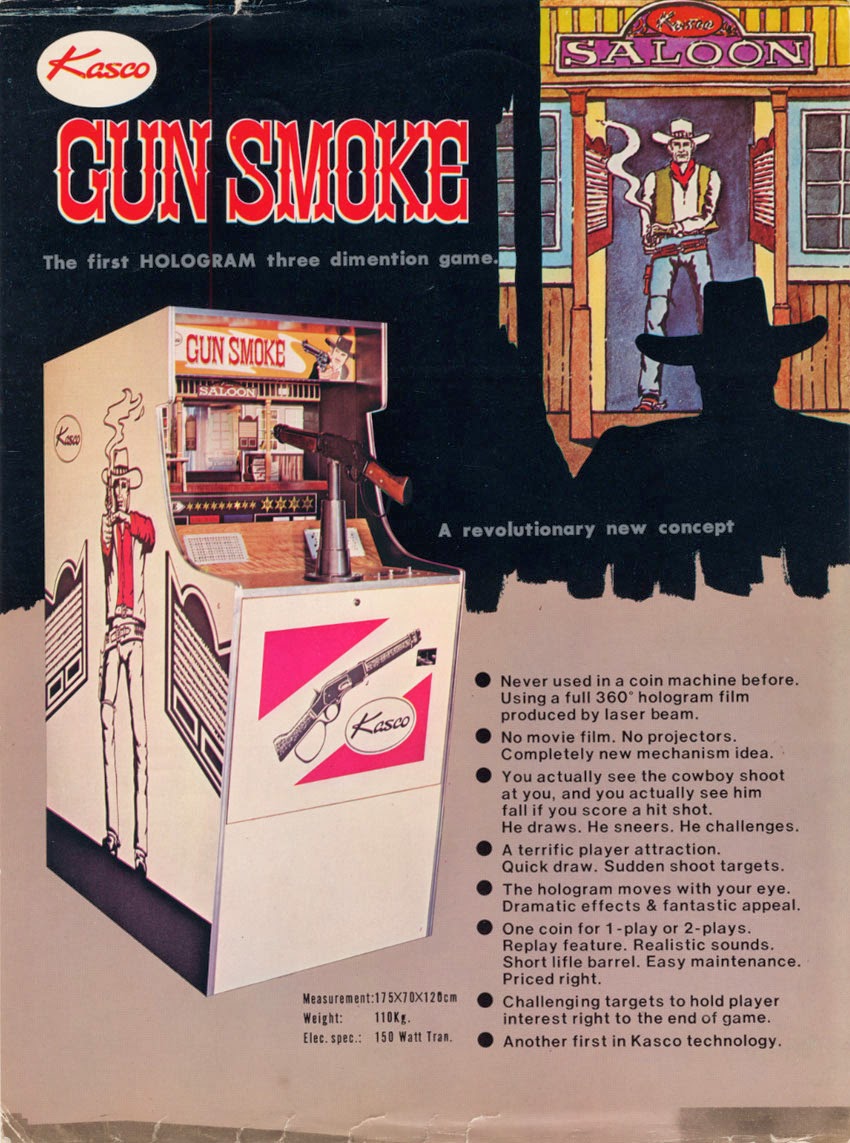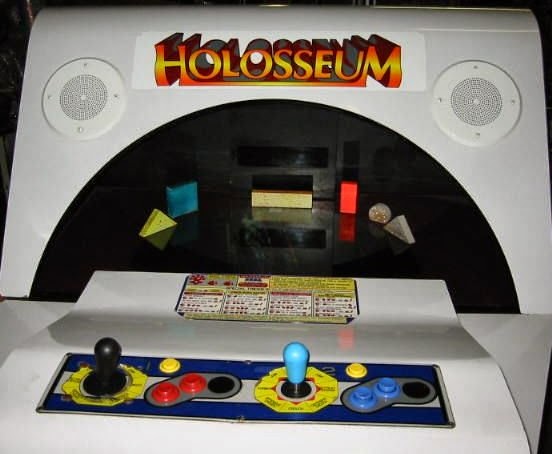I am getting ready to post the next part of my ultimate history of Allied Leisure/Centuri, which will start covering the Centuri years, but I recently came across some new information about the Allied Leisure era that I thought I'd pass along.
I am currently reading Brian Bagnall's excellent Commodore: A Company on the Edge. While the book is mostly about the early years of Commodore (I think it covers mostly the PET/Vic-20/ C64 years) it actually has a surprisingly lengthy section that discusses Allied Leisure.
Why would a book about Commodore even mention Allied Leisure?
As it turns out, Chuck Peddle actually did contract work for Allied. For those who don't know, Peddle was the designer of the 6502 microprocessor (the processor used in the Apple II, Atari 800, and Commodore PET). While he was working at MOS Technology (developers of the 6502), Peddle visited Allied Leisure to try to sell them the chip. At the time, they were investigating the use of microprocessors in their games and were talking with a number of other companies. To convince them to go with MOS, Peddle designed a prototype pinball game that used the 6502. Unfortunately, the book doesn't give the game's name or even when it was produced (though it was probably 1975, the year the 6502 debuted). It does mention that Peddle demoed it at the National Computer Conference but doesn't say when. I'd love to find more info about the game. It may be the same game I mentioned in the Allied Leisure post designed by Ian Richter. It could also have been a prototype for Rock On or Dyn-O-Mite but that seems unlikely to me since I've never heard that Peddle was involved in those games.
Perhaps more interesting is that Peddle's brief stint at Allied may have altered the course of personal computer history. While at Allied, Peddle befriended a young engineer named Bill Seiler. While Peddle was working on his pinball prototype at night, Seiler had ordered an early kit computer from a company called The Digital Group. Released in 1975, the computer was much more user friendly than the recently-introduced Altair 8800. The Digital Group computer offered the choice of 4 CPUS, a warm boot, and interfaces for a cassette deck (for storage), keyboard, and monitor. After Seiler built the kit, he wrote a few programs then was unable to find anything else to do with it (there was no software at the time). Watching Seiler play with his new toy convinced Peddle that there was a market for a user-friendly personal computer and he returned to MOS Technology and began work on the Kim 1, an early personal computer released in 1976. Later, when he moved to Commodore, he recruited Seiler to work on the PET design team.
Bagnall's book has more information about Seiler's years at Allied and you can buy the book if you are interested (it's available as an e-Book). I thought I'd pass along one quote, however. When Seiler worked at Allied, he was shocked by the poor design of their games and the inexperience of their technicians (many of whom were Cuban exiles). At one point he describes the repair techniques used by a colleague:
[Bill Seiler] There was this Cuban guy who didn’t know anything about logic...He had this little book, and if a videogame like a Pong game was doing something funny, he would just change three chips and it would fix it. He did this other thing where he would rub on a chip with a pink pencil eraser and it would start working again for a few seconds, and then it would go away and he knew that was a bad chip. I said this is voodoo man[1]
Anyway, I have added the above info to my earlier post, but if you want to read more or have any interest in Commodore, I heartily recommend Bagnall's book. He conducted extensive interviews with a number of the major players (the only downside so far is that he spends little time on the pre-computer years).
Unfortunately, it looks like there won't be a sequel. Bagnall was working on one and was scheduled to release it several weeks ago, but he posted on his blog that the project has been shelved indefinitely.
It's too bad since (aside from the Commodore info), part 2 would likely have included interviews with Dave Needle and maybe more info about his early video game career.
I am currently reading Brian Bagnall's excellent Commodore: A Company on the Edge. While the book is mostly about the early years of Commodore (I think it covers mostly the PET/Vic-20/ C64 years) it actually has a surprisingly lengthy section that discusses Allied Leisure.
Why would a book about Commodore even mention Allied Leisure?
As it turns out, Chuck Peddle actually did contract work for Allied. For those who don't know, Peddle was the designer of the 6502 microprocessor (the processor used in the Apple II, Atari 800, and Commodore PET). While he was working at MOS Technology (developers of the 6502), Peddle visited Allied Leisure to try to sell them the chip. At the time, they were investigating the use of microprocessors in their games and were talking with a number of other companies. To convince them to go with MOS, Peddle designed a prototype pinball game that used the 6502. Unfortunately, the book doesn't give the game's name or even when it was produced (though it was probably 1975, the year the 6502 debuted). It does mention that Peddle demoed it at the National Computer Conference but doesn't say when. I'd love to find more info about the game. It may be the same game I mentioned in the Allied Leisure post designed by Ian Richter. It could also have been a prototype for Rock On or Dyn-O-Mite but that seems unlikely to me since I've never heard that Peddle was involved in those games.
Perhaps more interesting is that Peddle's brief stint at Allied may have altered the course of personal computer history. While at Allied, Peddle befriended a young engineer named Bill Seiler. While Peddle was working on his pinball prototype at night, Seiler had ordered an early kit computer from a company called The Digital Group. Released in 1975, the computer was much more user friendly than the recently-introduced Altair 8800. The Digital Group computer offered the choice of 4 CPUS, a warm boot, and interfaces for a cassette deck (for storage), keyboard, and monitor. After Seiler built the kit, he wrote a few programs then was unable to find anything else to do with it (there was no software at the time). Watching Seiler play with his new toy convinced Peddle that there was a market for a user-friendly personal computer and he returned to MOS Technology and began work on the Kim 1, an early personal computer released in 1976. Later, when he moved to Commodore, he recruited Seiler to work on the PET design team.
Bagnall's book has more information about Seiler's years at Allied and you can buy the book if you are interested (it's available as an e-Book). I thought I'd pass along one quote, however. When Seiler worked at Allied, he was shocked by the poor design of their games and the inexperience of their technicians (many of whom were Cuban exiles). At one point he describes the repair techniques used by a colleague:
[Bill Seiler] There was this Cuban guy who didn’t know anything about logic...He had this little book, and if a videogame like a Pong game was doing something funny, he would just change three chips and it would fix it. He did this other thing where he would rub on a chip with a pink pencil eraser and it would start working again for a few seconds, and then it would go away and he knew that was a bad chip. I said this is voodoo man[1]
Anyway, I have added the above info to my earlier post, but if you want to read more or have any interest in Commodore, I heartily recommend Bagnall's book. He conducted extensive interviews with a number of the major players (the only downside so far is that he spends little time on the pre-computer years).
Unfortunately, it looks like there won't be a sequel. Bagnall was working on one and was scheduled to release it several weeks ago, but he posted on his blog that the project has been shelved indefinitely.
It's too bad since (aside from the Commodore info), part 2 would likely have included interviews with Dave Needle and maybe more info about his early video game career.
[1]Bagnall, Brian, Commodore: A Company on the Edge (p. 42). Independent Publishers Group. Kindle Edition.















































